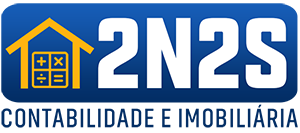Source and target metamodels define the relationship between concepts and need to be modelled only once. In the same way, model transformations are only defined once, unless the metamodel changes. Its basic idea is to ensure safety and prevent accidents and disasters by adding functional equipment to protect human life, health, and environment (region) from hazardous events.

Its integration in a particular MDE process requires the appropriate tool support, and has already been validated for the NDT methodology and tool suite. In this regard, it can be confirmed that MDE provides solutions for challenges Ch.1. Tool support for trace model maintenance, cited in “Materials and Methods”. This paper also demonstrates how the approach implements the automatic tracing of information; a task critical for information fusion. Models of each phase are connected to other models of the same phase and to models of other phases—these are the horizontal and vertical traces mentioned earlier. These rules have now been specifically established and hardcoded within the tool.
Tracing towards and beyond the requirements
This project offered an opportunity to assess the potential of the traceability matrix for managing heterogeneous, dispersed development teams in complex functional environments. The NDT tool was used in the project to develop a functional module for defining a control panel involving parameters for echo definition. The requirements specification of this module comprised 30 use cases and more than 200 activities.

Preventing them from happening is key to healthy partner relations and maximizing channel partner program benefits. This article presents an MDE approach supporting automated, almost “for free”, trace management in the software construction process. The approach comprises a high-level, methodology-independent metamodel and its instantiation for a web methodology.
How To Prevent or Resolve Channel Conflict
Homogenization of the software tool environment via an ALM tool – ALM tool chains cover the software development life-cycle and manage all artifacts of the software development process. Many companies have chosen a best-of-breed approach with task management, code management and numerous test automation tools. Companies that choose a best-of-breed approach solve the traceability challenge with requirements management (RM) tools that provide a complete traceability model and integrations for the best of breed tools. A single ALM tool to cover requirements, risk analysis, system design, task management, code repositories, integration, testing and more is a classic trade-off between best-of-breed capabilities vs. a more limited feature, common platform. Software Safety Analysis supplements the system hazard analysis by assessing the software performing critical functions serving as a hazard cause or control.
They need to understand the ROI of traceability and how to obtain the best results with minimum effort. Success stories like those provided in this work will help to disseminate and integrate traceability in the software development process. However, the authors believe it necessary to implement automatic ROI measurement in the tool as the best means of convincing companies. It is therefore necessary to continue working to improve the results in order to meet challenge 3 (Ch.3. Return of investment (ROI) measurement) cited in “Materials and Methods”. The proposed approach makes it possible to create, maintain and manage traces as a by-product of model-driven development processes.
Critical features of AI implementation in business
Horizontally traceable schedules support the calculation of activity and milestone dates and the identification of critical and near-critical paths. After you’ve decided on your format, gathered your requirements, and created your tests, your team is ready to begin analyzing the project. Creating a habit of filling out your requirements traceability matrix after every horizontal traceability test case is the key to success. Requirements traceability is a concept related to requirements management which often provokes negative thoughts of complex tools, a lot of work, and an unnecessary loss of time. However, as with most business analysis techniques and disciplines, finding “just the right amount” can provide a significant benefit to the project.
- A NIST customer or collaborator may state as a fact that calibrations provided by NIST are used in part to establish metrological traceability to the SI or other specified reference using the results of NIST measurements.
- Ideally, the same schedule serves as the summary, intermediate, and detailed schedule by simply creating a summary view filtered on summary activities orhigher-level WBS milestones.
- Brand et al. [38] provide a list of certified reference materials that should be used to identify accepted references for delta value isotope ratio traceability statements.
- What happens if you need to feed ten more people, and they want chocolate instead of vanilla?
This approach can also be useful for information fusion in industry insofar that it facilitates data traceability. Laura Garcia-Borgoñon conceived and designed the experiments, performed the experiments, analyzed the data, performed the computation work, prepared figures and/or tables, authored or reviewed drafts of the paper, and approved the final draft. Nora Koch conceived and designed the experiments, performed the experiments, analyzed the data, performed the computation work, prepared figures and/or tables, authored or reviewed drafts of the paper, and approved the final draft. María-José Escalona conceived and designed the experiments, performed the experiments, analyzed the data, performed the computation work, prepared figures and/or tables, authored or reviewed drafts of the paper, and approved the final draft. Once TraceLink have been created, the Quality plug-in checks consistency whenever a change is made—for instance, if a new activity like “Fill in personal patient data” is added to the activity diagram in Fig.
1 Tasking for Software Assurance
We can say that it is the best guideline for improving routine work by eliminating problems such as inefficient procedures or repeated mistakes. By obtaining ISO 9001 certification, the company can also achieve social credibility and increase the trust of customers. A NIST customer or collaborator may state as a fact that calibrations provided by NIST are used in part to establish metrological traceability to the SI or other specified reference using the results of NIST measurements.

A systematic evaluation is not included in this paper as it is still work in progress. No matter how you decide to implement a requirements traceability matrix into your organization, it will likely transform your workflow for the better. RTM documents help to focus your team’s energies on the most pressing problems. They also stop you from inadvertently completing the same test cases without improving your project. Indeed, projects can be costly to develop and pursue, and your team should take advantage of any tool that promises to save time and improve your work.
Traceability and its types
The process presented in the previous section will be applied to integrate our approach in the NDT tool suite. The approach could be integrated in the same way in other software development tools, particularly in web application development tools. This section also illustrates its application in one of the real projects that were developed using the approach. The trace model is modelled as a composite of trace links relating elements of a source context model (for example, a requirement use case model) with the elements of a target context model (for example, a class model in the design phase). The related elements in the context model are the so-called “traceable” elements in the metamodel.
Establishing and maintaining robust vertical and horizontal requirements traceability helps to trace transmission of a change to all affected work products and customers/users. When a change in requirement happens, effective impact analysis is possible with the help a traceability matrix. Thus we are in a better position to find adverse side effects due to a modification in a work product and ensure that the change did not hinder compliance with user requirements. Establishing traceability beyond requirements into design, implementation, and verification artifacts can become difficult.
What Causes Vertical Channel Conflict?
A (semi)formal specification of this traceability management approach was obtained using metamodeling as the description technique. Model-Driven Engineering techniques are mainly used for the automatic generation of code in the software development process (Hutchinson et al., 2011). MDE also plays an important role in other software engineering areas such as software testing, supporting the generation of test cases. The aim in the present study was to demonstrate the potential of MDE in terms of traceability, since it allows traces to be recorded as a by-product of model transformations.
